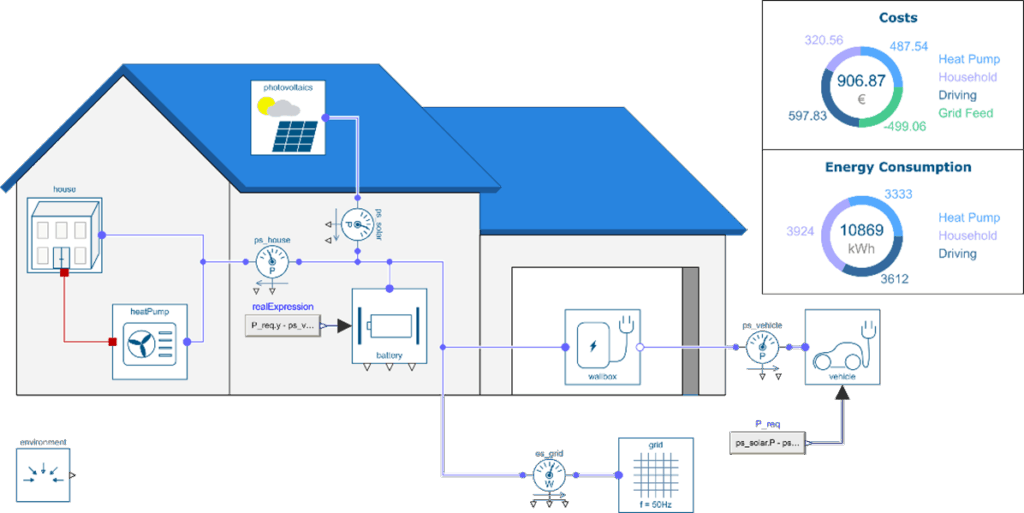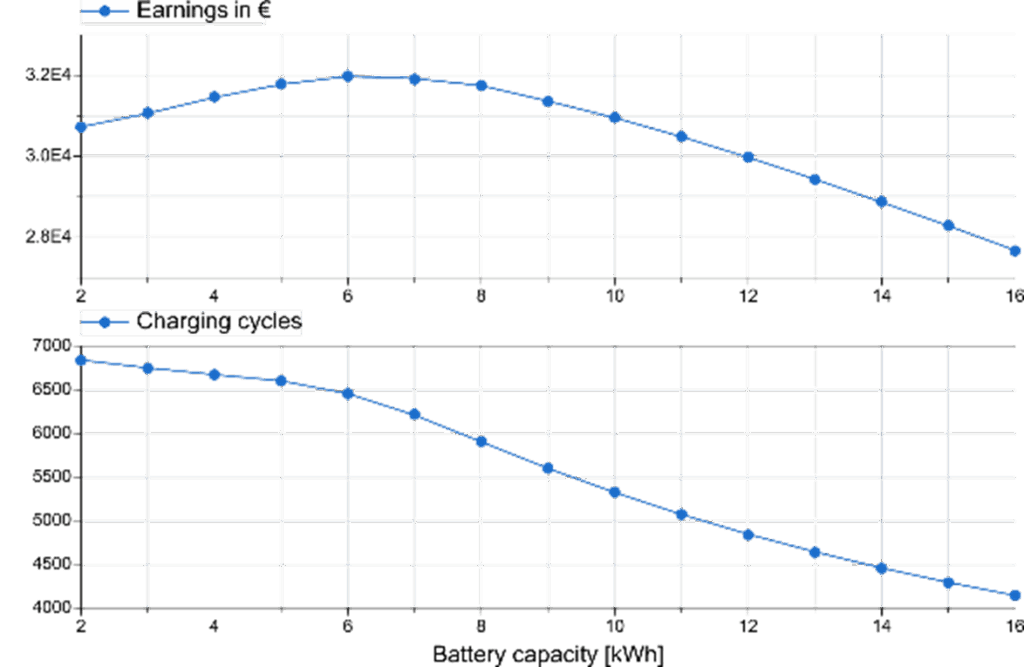Introducing SuSy: A New Modelica Library for Sustainable Supply Systems
CATIA DYMOLA (DYMOLA: the premier tool for Modelica and FMI. As part of the CATIA brand it provides efficient system simulation for a wide range of application domains) team has developed a new Modelica library, Sustainable Supply Systems (SuSy), to help simplify hybrid energy system design. Unlike high-fidelity niche component libraries, SuSy focuses on robust, scalable, and easy-to-parametrize models that enable quick system-level insights during early design phases.
SuSy is designed for engineers in the energy/mobility sectors moving from conceptual designs toward functional prototypes, where large datasets for parameterization are not yet available. Simulations can therefore be performed with limited data to provide early insights into real-world behavior, saving valuable time and money compared to building and testing physical prototypes.
Beyond Spreadsheets: Real Dynamics, Real Insights
While spreadsheet-based tools like Excel handle static calculations well, SuSy leverages Modelica’s equation-based, modular approach to capture dynamic system behavior under changing conditions and control strategies—bridging the gap between early concepts and reality. Modeling equivalent systems with spreadsheets would be extremely cumbersome and difficult to scale.
With SuSy’s pre-configured components, engineers can quickly assemble and test complex energy systems using the drag-and-drop interface in Dymola, 3DS’s system simulation environment. The library includes ready-to-use examples from industries such as smart buildings, district heating, manufacturing, mining, marine, rail, and aviation—giving users a strong starting point. Its true strength lies in the highly customizable models, which make it easy to adapt existing examples or configure entirely new systems with minimal effort. Covering multiple domains—electricity, thermal, fuels, water, steam, vehicles, and more—SuSy ensures realistic energy flows through physical connectors, enabling seamless cross-domain modeling
Use Case: A Smart-Energy Home in Action
Take a smart-energy home as an example: a thermal building model with PV panels, a battery, a heat pump, and an EV connected to the building’s energy system via its charger. SuSy can simulate a full year of operation in hourly resolution in 5 to 10 seconds on most modern CPUs, helping users quickly optimize self-consumption of solar energy while balancing costs and battery usage.

Balancing Costs and Performance with Techno-Economic Tradeoffs
SuSy combines physical models with economics and emissions. Through parameter sweeps, Dymola can evaluate how changes—like battery capacity—affect costs and CO2 savings over decades. This helps engineers with decision-making without lengthy manual analysis.

For a more thorough insight into this particular example as well as others, be sure to check out the recording of the recently held CATIA webinar demo here.
Ready for Control Systems and Digital Twins
SuSy doesn’t just stop at system modeling—it supports integration with external control systems via FMI, making it suitable for hardware-in-the-loop testing, model predictive control, and real-time digital twin applications such as fault analysis.
Cloud-Enabled Collaboration with 3DEXPERIENCE
Through the 3DEXPERIENCE platform, SuSy’s models can be run and customized directly in the cloud using the System Simulation and Design app (SID). This simplifies collaboration by ensuring all stakeholders can access and interact with system designs seamlessly over one platform.
Whether for smart buildings, electric mobility, or multi-energy grids, SuSy empowers engineers to prototype early, iterate fast, and design smarter systems—turning ambitious concepts into reality.
FAQ
1. Which industries and energy domains are supported by SuSy’s pre-configured components and customizable models?
Answer:
SuSy includes ready-to-use examples for industries like smart buildings, district heating, manufacturing, mining, marine, rail, and aviation. It supports cross-domain modeling in areas such as electricity, thermal, fuels, water, steam, and vehicles, using physical connectors for realistic energy flows.
2. What advantages does SuSy offer engineers working in the early design phases of hybrid energy systems?
Answer:
SuSy enables simulations with limited data, providing early insights into real-world behavior. This helps engineers move from conceptual design to functional prototypes more quickly, saving time and money by reducing reliance on physical prototypes.
3. How does SuSy overcome the limitations of static tools like spreadsheets when modeling complex energy systems?
Answer:
Unlike spreadsheets, which handle only static calculations, SuSy uses Modelica’s equation-based, modular approach to capture dynamic system behavior under changing conditions and control strategies. This makes it easier to model, scale, and simulate complex, real-world systems.
4. How does SuSy support control system integration and collaboration across teams?
Answer:
SuSy supports integration with external control systems via FMI, making it suitable for hardware-in-the-loop testing, model predictive control, and real-time digital twin applications like fault analysis. Additionally, through the 3DEXPERIENCE platform, SuSy models can be run and customized in the cloud using the System Simulation and Design (SID) app, enabling seamless collaboration among stakeholders on a single platform.
